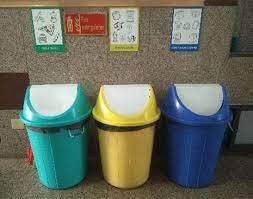Description
Description
Segregation bins, also known as waste separation bins or recycling bins, are containers designed to facilitate the sorting and collection of different types of waste materials. These bins play a crucial role in waste management and environmental sustainability by encouraging individuals and organizations to separate recyclables from non-recyclables. Here are some key points about segregation bins:
- Waste Sorting: Segregation bins are designed to encourage the separation of various types of waste, such as paper, plastic, glass, metal, organic waste, and general non-recyclable waste.
- Color-Coded: Bins are often color-coded to represent different categories of waste, making it easy for users to identify and correctly dispose of their waste.
- Recycling Promotion: The use of segregation bins promotes recycling by making it convenient and encouraging individuals to divert recyclable materials from landfills.
- Environmental Impact: Proper waste segregation and recycling help reduce the environmental impact of waste disposal, including reduced landfill usage and conservation of resources.
- Public Spaces: Segregation bins are commonly found in public spaces, offices, schools, and residential areas to encourage responsible waste disposal.
- Waste Diversion: They facilitate the diversion of recyclable materials to recycling facilities, where they can be processed and reused.
- Compliance: In many regions, businesses and institutions are required to provide segregation bins to comply with waste management regulations.
- Educational Tool: These bins serve as an educational tool, raising awareness about recycling and its positive environmental effects.
- Sustainability: Effective waste segregation contributes to overall sustainability goals by conserving resources and reducing landfill waste.
- Customization: Organizations often customize segregation bins to include labels and graphics that help users understand what types of materials belong in each bin.
- Collection Systems: Waste management services may use segregation bins as part of their collection systems to simplify the sorting process at recycling facilities.
In summary, segregation bins are an essential component of responsible waste management and recycling efforts. They promote waste separation, reduce landfill waste, and contribute to a more sustainable and environmentally friendly approach to waste disposal.

